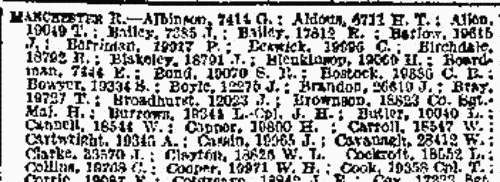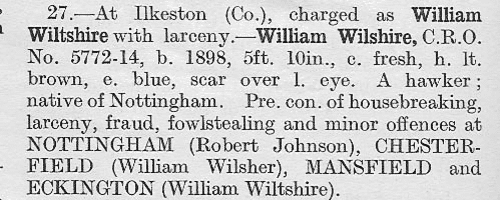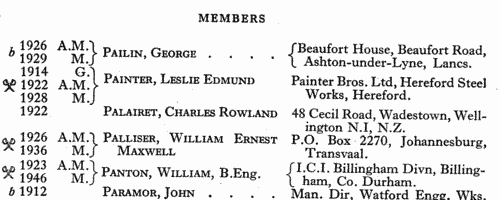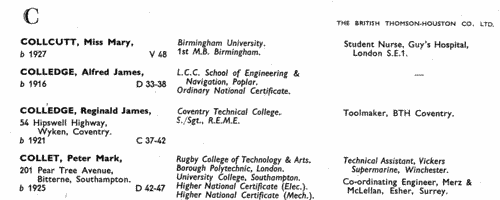Garrity Surname Ancestry ResultsOur indexes 1000-1999 include entries for the spelling 'garrity'. In the period you have requested, we have the following 36 records (displaying 21 to 30): Single Surname Subscription | | | Buying all 36 results of this search individually would cost £204.00. But you can have free access to all 36 records for a year, to view, to save and print, for £100. Save £104.00. More... |
These sample scans are from the original record. You will get scans of the full pages or articles where the surname you searched for has been found. Your web browser may prevent the sample windows from opening; in this case please change your browser settings to allow pop-up windows from this site.  British artillerymen fighting in South Africa
(1899-1902) British artillerymen fighting in South Africa
(1899-1902)
The Queen Victoria's South Africa Medal was awarded (after her death, in the event) to all who had served honourably in the various campaigns in the Boer War. Returns were made from each unit, and consolidated into nominal roll, of which this is the one for the Royal Artillery. Confusingly, the ledgers used had originally been printed for a register of men transferred (or re-transferred after mobilization) to 1st Class Army Reserve. All the original column headings were therefore struck through, and the roll was prepared with this information: Date of Issue; Regimental Number; Rank; Name; Unit; Medal (a 1 indicating that a medal was awarded); [number of] Clasps; the reference to the source in the original returns, usually starting with AG for papers in the hands of the Adjutant-General, and 68/Art/ for the Royal Artillery records. The final column, normally left blank, was occasionally used for explanatory remarks.GARRITY. Cost: £8.00.  | Sample scan, click to enlarge

|  Queen's South Africa Medal: Royal Field Artillery: 13th Battery
(1901-1905) Queen's South Africa Medal: Royal Field Artillery: 13th Battery
(1901-1905)
The nominal roll for the Queen Victoria's South Africa Medal - awarded (after her death, in the event) to all who had served honourably in the various campaigns in the Boer War - was compiled from these returns from the individual units. Two sets of form were completed. The main one, as in the sample scan, dates from 1901 and gives regimental number, rank, and full name (surname first), followed by a series of columns relating to different actions - Belmont, Modder River, Paardeberg, Dreifontein, Wepener, Johannesburg, Diamond Hill, Belfast, Wittebergen, Defence of Kimberley, Relief of Kimberley, Defence of Mafeking, Relief of Mafeking, Cape Colony, Orange Free State, Transvaal, Rhodesia, Talana, Elandslaagte, Tugela Heights, Defence of Ladysmith, Relief of Ladysmith, Laing's Nek, and Natal; each entitled the man to a separate clasp to the medal, and a tick or a Yes in the appropriate column indicates the man's actual physical presence in that battle. A final column for remarks is important in those cases where the man was no longer in the unit, by removal, death or desertion. The second form that sometimes occurs was returned in 1905, and covers men entitled to the Second South African War Medal and Clasps. It lists men by number, rank and name, checks whether they had claimed the Queen's South Africa Medal, and then enquires as to their suitability as to three Colony Clasps, which could be awarded for service in the Cape, Orange Free, or Transvaal; whether entitled to Date Clasps (South Africa 1901 and South Africa 1902); whether also entitled to the King's South Africa Medal; any other corps in which served in South Africa; and remarks (such as becoming non-effective, forfeiture, &c.) WO 100/140GARRITY. Cost: £8.00.  | Sample scan, click to enlarge

| Soldiers wounded in the Great War: Northumberland Fusiliers
(1916)
Lists of names of soldiers wounded, died of wounds, died, killed, missing presumed dead, and taken prisoner by the enemy, were issued to the British national press under the title Roll of Honour. Each man is identified by surname, initials and number. The regimental returns from which the daily Roll was compiled were made up over the previous week or weeks. Each regimental return may be partial, covering only part of the alphabet. The lists are provisional, in that a man reported wounded one day may appear as died of wounds later; a missing presumed dead may later be reported as having been found, or as having died; the lists of prisoners of war were provided by the enemy and will relate to captures weeks earlier. However, these rolls are the most comprehensive single source of names of British and allied combatants meeting with misfortune in the Great War. This is the roll published 1 August 1916. The sample scan is taken from a section of the Roll of Honour for the Manchester Regiment.GARRITY. Cost: £6.00.  | Sample scan, click to enlarge

| In police custody at Ulverston in Lancashire
(1923)
The Police Gazette was published by Authority by the London Metropolitan Police, and circulated, as confidential, to the police forces throughout Britain and Ireland. The contents were based on the information routinely submitted to the Criminal Record Office. One of the regular features was a section entitled Persons in Custody, in which each police force gave details of people taken into custody on remand or awaiting trial. The name of the arresting force is given, with duration of remand &c., and nature of charge; then the full name of the suspect (in bold), the C. R. O. number; year of birth; height; complexion; colour of hair; colour of eyes; occupation; birthplace; and details of previous convictions. Variations of surname spelling and aliases are noted in the descriptions, and these variants and aliases have also been indexed.GARRITY. Cost: £6.00.  | Sample scan, click to enlarge

| Graduate Electrical Engineers (Graduate I. E. E.)
(1939)
The Institution of Electrical Engineers was founded in 1871 under the name of The Society of Telegraph Engineers, and incorporated by royal charter in 1921. The list of members, corrected to 1 September 1939, gives the names and addresses of the various grades of members. Members (M. I. E. E.) and Associate Members (A. M. I. E. E.) were entitled to describe themselves as Chartered Electrical Engineers. Then there are the Associates (Associate I. E. E.), Companions (Companion I. E. E.), Graduates (Graduate I. E. E.) and Students (Student I. E. E.). The names are given in bold, surname first; before each name is the year of attaining that grade; and for the higher grades the year of each lower grade is also given, e. g. (G. 1931).GARRITY. Cost: £4.00.  | Sample scan, click to enlarge

| Members of the Institution of Mechanical Engineers (M. I. Mech. E.)
(1947)
The Institution of Mechanical Engineers, founded in 1847, was incorporated by royal charter in 1930. The list of members of 1 March 1947 gives the names (surname first) and addresses of the seven classes of member - Honorary Members (Hon. M. I. Mech. E.); Members (M. I. Mech. E.); Associate Members (A. M. I. Mech. E.); Companions (C. I. Mech. E.); Associates (A. I. Mech. E.); Graduates (G. I. Mech. E.); and Students (S. I. Mech. E.). The year of attaining qualification is given in the left-hand margin; in the higher grades the years of achieving the lower grades are also given, bracketed together. The crossed swords symbol indicates naval or military service during the Great War of 1914-1918; an italic b shows a member of the Benevolent Fund. (p) after a Graduate's or a Student's name indicates one who had passed the whole of the A. M. Examination or its recognized equivalent.GARRITY. Cost: £4.00.  | Sample scan, click to enlarge

| Chartered Electrical Engineers (M. I. E. E. and A. M. I. E. E.)
(1951)
The Institution of Electrical Engineers was founded in 1871 under the name of The Society of Telegraph Engineers, and incorporated by royal charter in 1921. This list of members, corrected to 2 July 1951, gives the names and addresses of the Members (M. I. E. E.) and Associate Members (A. M. I. E. E.), all of whom were entitled to describe themselves as Chartered Electrical Engineers. The names are given in bold, surname first; before each name is the year of attaining the grade of Associate Member (AM) or Member (M); and, before the address, the year of reaching each lower grade is also given, e. g. (G. 1931), G standing for Graduate, S for Student. Where the engineer was also a member of one of the institution's specialized sections, this abbreviation is given, in bold: M, Measurements Section; R, Radio Section; S, Supply Section; U, Utilization Section.GARRITY. Cost: £4.00.  | Sample scan, click to enlarge

| Ex-Apprentices of British Thomson-Houston Company
(1951)
In 1938 the British Thomson-Houson Co Ltd of Rugby first published a 'record of those who embarked upon careers in the Engineering Industry by way of the British Thomson-Houston Company's Training Scheme': this enlarged edition was issued in September 1951, based on data verified up to December 1948, with subsequent corrections up to the time of printing. The company had been training apprentices since 1899.
The names of the deceased were printed in italics: the most vestigial entries in the volume simply give full name, and the years of apprenticeship; but most entries are much more comprehensive. The symbol 'w' indicates killed by enemy action.
In the first column full name is given in bold, surname first (in capitals), and then any title, decorations, academic qualifications in italics. Beneath that is current address (as of 1951); and then (to the left) year of birth, and (to the right) nature of course followed and years (e. g. 30-32 for 1930 to 1932) of commencement and completion. The abbreviations for the courses are: C, Craft Apprentice; Ch, Chemist Apprentice; Cl, Clerical Apprentice; D, Drawing Office Apprentice; E, Engineering Student Apprentice (Engineering Apprentice up to 1947); G, Graduate Apprentice (Student Apprentice up to 1947); (s), Special Course; T, Testers' Course; V, Vacation Student; W. O., Works Office Apprentice.
The second column gives particulars of academic training, war service, and miscellaneous information.
The third column gives positions held in the past (printed in italics) and present position (as of 1951) where known.GARRITY. Cost: £4.00.  | Sample scan, click to enlarge

| Aviators' Certificates
(1952)
Lists of certificates granted by the Royal Aero Club of the United Kingdom to newly-qualified aviators of powered aircraft: giving certificate number, full name, and name of his or her aero club, R.A.F. station, &c. Certificate numbers 27783 to 28078, issued from 30 November 1951 to 19 June 1952. This system of certification ended 24 March 1952, being replaced by pilots' certificates, in four classes.GARRITY. Cost: £6.00.  | Sample scan, click to enlarge

| Graduate Structural Engineers
(1953)
The Institution of Structural Engineers was founded in 1908 and incorporated by royal charter in 1934. The institution had nine branches in Britain and Northern Ireland, and one in South Africa. The 1953 year book includes this list of members corrected to 1 August 1953, giving year of election to the various grades, surname (in bold), christian name, honours, address, and telephone number. 'Graduates shall be students of structural engineering who have attained the age of not less than 21 years and have passed a qualifying examination.'GARRITY. Cost: £4.00.  | Sample scan, click to enlarge

|
Research your ancestry, family history, genealogy and one-name study by direct access to original records and archives indexed by surname.
|













